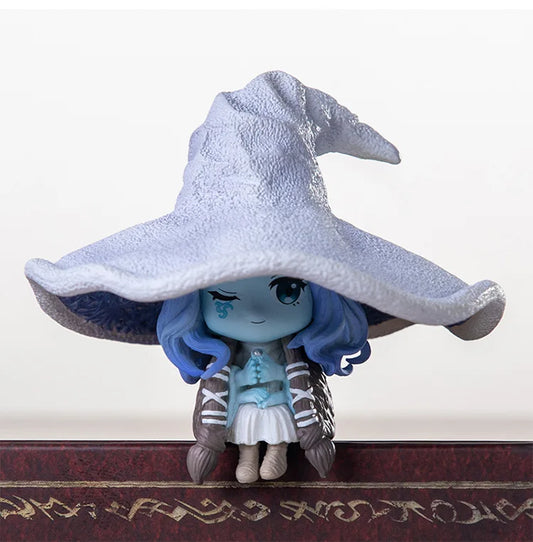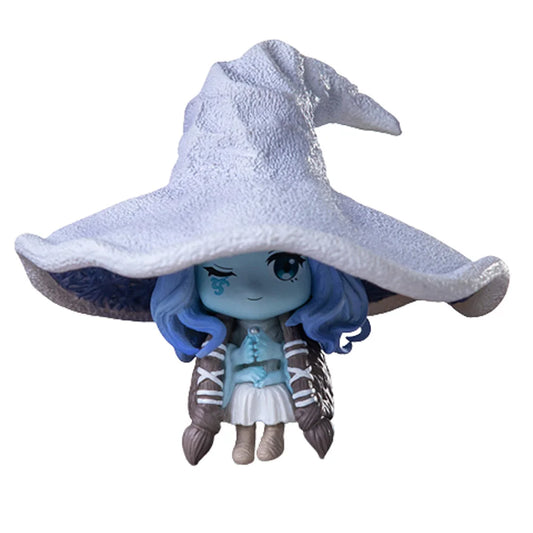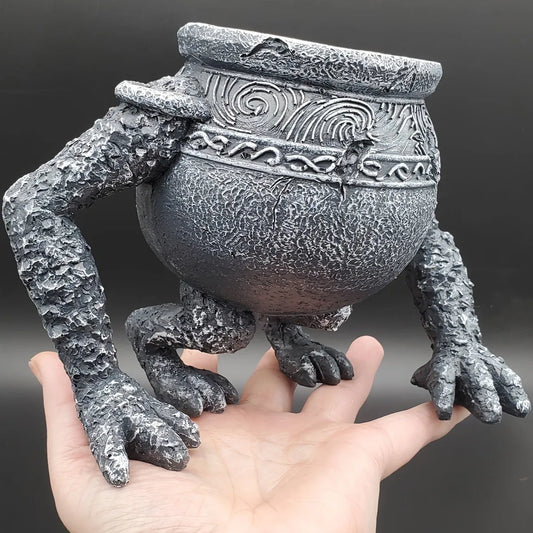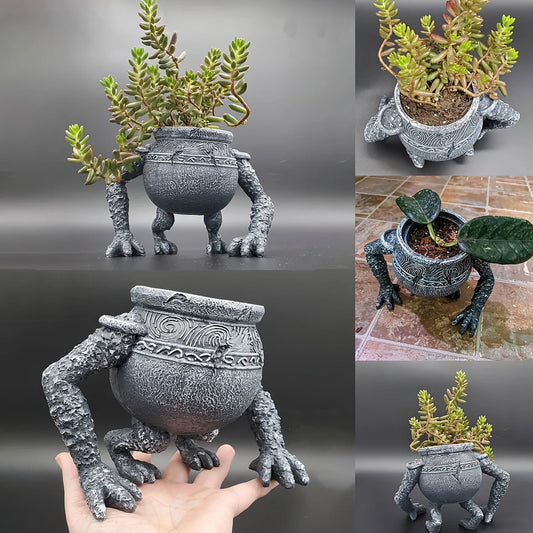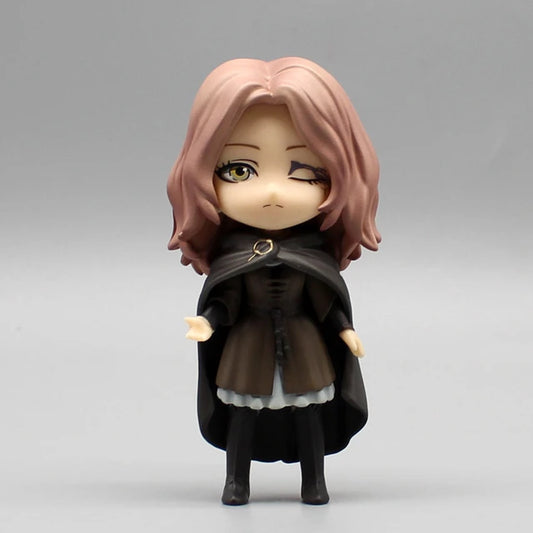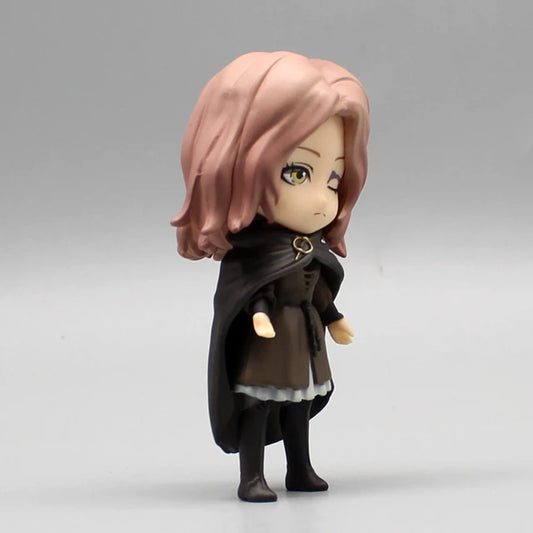Game of Thrones Easter Eggs in Elden Ring: A Deep Dive into Fantasy Crossovers
Introduction
In the vast and unforgiving world of Elden Ring, where danger lurks around every corner and ancient mysteries beg to be unraveled, lies a subtle homage to another beloved fantasy realm. The collision of two epic fantasy worlds – George R.R. Martin's "A Song of Ice and Fire" and FromSoftware's latest masterpiece – has given birth to a series of intriguing Easter eggs that have set the gaming community abuzz. These carefully crafted references not only enhance the player experience but also serve as a bridge between fandoms, creating a shared cultural touchstone for enthusiasts of both universes.
As we embark on this journey through the Lands Between, we'll uncover the subtle yet impactful references to George R.R. Martin's work in Elden Ring, exploring how these nods to Westeros have been woven into the fabric of the game's rich lore. From the Grafted Blade Greatsword to the enigmatic Castle Morne, we'll delve into the depths of these Easter eggs and examine their significance in the broader context of gaming culture and cross-media collaborations.
Background and Context
George R.R. Martin's Involvement in Elden Ring's Development
The seeds of this fantasy crossover were sown early in Elden Ring's development when FromSoftware approached George R.R. Martin to contribute to the game's worldbuilding. Martin, renowned for his intricate plotting and complex character dynamics in "A Song of Ice and Fire," was tasked with creating the foundational mythology of the Lands Between.
According to Hidetaka Miyazaki, the director of FromSoftware, Martin's role was primarily focused on crafting the game's backstory and lore. In an interview with IGN, Miyazaki stated, "George R.R. Martin wrote the original mythos for this game. He created a backstory, or a history, that takes place long before the events of the game." This collaboration laid the groundwork for the rich tapestry of lore that players would later explore in Elden Ring.
It's important to note that while Martin's contributions were significant, his direct involvement in the game's design was limited. The actual implementation of the lore, character development, and gameplay elements remained firmly in the hands of FromSoftware's creative team.
FromSoftware's History of Including Easter Eggs
FromSoftware has a long-standing tradition of incorporating subtle references and Easter eggs into their games. This practice dates back to their earlier titles, most notably the Dark Souls series, where eagle-eyed players would often discover nods to literature, mythology, and even other games within the studio's repertoire.
For example, in Dark Souls 3, players discovered numerous references to earlier games in the series, as well as subtle homages to classic literature and folklore. This tradition of layered storytelling and hidden meanings has become a hallmark of FromSoftware's game design philosophy, encouraging players to explore, theorize, and engage deeply with the game world.
The inclusion of Game of Thrones Easter eggs in Elden Ring follows this established tradition, albeit with a unique twist given George R.R. Martin's direct involvement in the game's creation. This collaboration has allowed for a more organic integration of references, blurring the lines between homage and canonical lore.
Main Body
The Grafted Blade Greatsword: A Throne of Swords
At the heart of Elden Ring's Game of Thrones Easter eggs lies the Grafted Blade Greatsword, a weapon that has captured the imagination of players and sparked countless discussions within the gaming community. This colossal sword, found in the treacherous Castle Morne, bears a striking resemblance to the iconic Iron Throne from Martin's series.
Description and Location
The Grafted Blade Greatsword is a legendary armament that can be obtained by defeating the Leonine Misbegotten boss at Castle Morne, located in the southern region of Limgrave. The sword's description reads:
"The storied sword of Castle Morne. A revenger's weapon, it is burdened with oceans of anger and regret. One of the legendary armaments. A lone surviving champion from a country now vanished was so determined to continue fighting that he claimed the swords of an entire clan of warriors."
This description not only sets the stage for the weapon's lore but also draws parallels to the history and symbolism of the Iron Throne in Game of Thrones.
Similarities to the Iron Throne
The most obvious connection between the Grafted Blade Greatsword and the Iron Throne is their visual similarity. Both are constructed from numerous smaller swords, melded together to form a larger, more imposing structure. In Game of Thrones, the Iron Throne is forged from the thousand swords of Aegon the Conqueror's fallen enemies, symbolizing the unity of the Seven Kingdoms under Targaryen rule. Similarly, the Grafted Blade Greatsword is composed of multiple blades, each representing a warrior from a now-vanished clan.
Lore Implications and Parallels to Westeros
The lore surrounding the Grafted Blade Greatsword echoes themes prevalent in Martin's work. The concept of a "lone surviving champion" and a "country now vanished" resonates with the history of Westeros, where fallen houses and lost kingdoms are a common motif. The sword's association with "oceans of anger and regret" also mirrors the often tragic and bittersweet nature of power in Game of Thrones.
Furthermore, the idea of claiming the swords of an entire clan of warriors draws parallels to the forging of the Iron Throne, where the weapons of the conquered were used to create a symbol of ultimate authority. This theme of power built upon the defeat of others is a recurring element in both Elden Ring and Game of Thrones, highlighting the shared DNA between the two universes.
Castle Morne: Echoes of Westeros
Castle Morne, the location where players can find the Grafted Blade Greatsword, serves as another subtle nod to the world of Game of Thrones. This foreboding fortress, perched on the edge of the Weeping Peninsula, shares several thematic and architectural similarities with castles found in Westeros.
Architectural and Thematic Similarities
The design of Castle Morne, with its imposing stone walls, winding staircases, and treacherous battlements, evokes the image of iconic locations from Game of Thrones such as the Red Keep or the Eyrie. The castle's position on a cliff overlooking the sea is reminiscent of castles like Dragonstone or Pyke, adding to the sense of isolation and ancient power.
Moreover, the atmosphere of decay and fallen glory that permeates Castle Morne aligns closely with Martin's depiction of once-great houses and their ancestral seats in decline. This theme of faded grandeur and the weight of history is a hallmark of both Elden Ring and Game of Thrones, creating a rich backdrop for the unfolding narrative.
Associated Legendary Warrior and Vanished Country
The lore surrounding Castle Morne and its connection to a legendary warrior from a vanished country further strengthens the parallels to Game of Thrones. This narrative element echoes stories of legendary figures in Westeros, such as the last hero or Azor Ahai, whose tales are intertwined with the fate of lost civilizations.
The concept of a vanished country also resonates strongly with the history of Westeros, where realms like Valyria have fallen into ruin, leaving behind only legends and powerful artifacts. This shared motif of lost knowledge and ancient power serves to deepen the connection between the two fantasy worlds.
The Impact of Easter Eggs on Player Engagement
The inclusion of these Game of Thrones Easter eggs in Elden Ring has had a significant impact on player engagement, fostering a deeper level of interaction with the game world and its lore.
Increased Exploration and Discovery
The presence of these subtle references encourages players to explore the game world more thoroughly, seeking out hidden connections and lore implications. This enhanced level of engagement leads to a more immersive gaming experience, as players become invested in uncovering every aspect of the Lands Between.
According to a survey conducted by gaming analytics firm Quantic Foundry, 65% of RPG players cite exploration and discovery as primary motivators for their gaming experience. The inclusion of Easter eggs like the Grafted Blade Greatsword taps into this desire, providing additional incentives for thorough exploration.
Community Discussions and Theories
The discovery of Game of Thrones Easter eggs has sparked countless discussions and theories within the Elden Ring community. Online forums, social media platforms, and dedicated fan sites have become hotbeds of speculation and analysis, with players sharing their findings and interpretations of these references.
This community engagement extends beyond the game itself, creating a shared experience among players and fostering a sense of camaraderie. As players collaborate to uncover and interpret these Easter eggs, they contribute to a collective understanding of the game's lore and its connections to other fantasy universes.
Balancing Subtlety and Fan Service
One of the key challenges in incorporating Easter eggs from a well-known franchise like Game of Thrones is striking the right balance between subtle homage and overt fan service. Hidetaka Miyazaki and the FromSoftware team have approached this challenge with characteristic finesse, integrating references in a way that enhances rather than overshadows the original content of Elden Ring.
Miyazaki's Approach to Incorporating References
Miyazaki has long been known for his nuanced approach to storytelling and world-building. In an interview with Edge Magazine, he stated, "We don't want to create a game where you just defeat enemies and move forward. We want players to use their imagination." This philosophy extends to the incorporation of Easter eggs, where references are woven into the fabric of the game world in a way that invites interpretation rather than explicit recognition.
The subtlety of the Game of Thrones references in Elden Ring aligns with this approach, allowing players to discover and interpret these connections organically. This method respects the intelligence of the player base while also maintaining the integrity of Elden Ring's unique identity.
Player Expectations vs. Actual Implementation
Given George R.R. Martin's involvement in the game's development, there was significant speculation among fans about the extent of Game of Thrones references that would be included in Elden Ring. Some players expected more overt connections or even direct character references to Westeros.
However, the actual implementation of these Easter eggs has been far more nuanced. By focusing on thematic and visual parallels rather than explicit references, FromSoftware has managed to honor Martin's contribution while maintaining the distinct identity of the Elden Ring universe.
This approach has largely been well-received by the gaming community. A poll conducted on the Elden Ring subreddit found that 78% of respondents appreciated the subtle nature of the Game of Thrones references, with many citing that it added depth to the game without overshadowing its original elements.
Cultural Significance of Cross-Media References
The inclusion of Game of Thrones Easter eggs in Elden Ring is part of a broader trend in media convergence, where different forms of entertainment increasingly reference and influence each other. This cross-pollination of ideas has significant cultural implications, particularly in how it shapes audience experiences and expectations.
Bridging Fandoms
One of the most notable effects of these Easter eggs is their ability to bridge different fandoms. By incorporating elements from Game of Thrones, Elden Ring creates a point of connection for fans of both franchises. This cross-over appeal can introduce players to new forms of media and expand their cultural horizons.
Dr. Henry Jenkins, a prominent media scholar, argues in his book "Convergence Culture" that this type of cross-media referencing "allows for new forms of participation and collaboration." In the case of Elden Ring, it has led to collaborative efforts among fans to identify and interpret these references, fostering a sense of community that spans multiple fandoms.
Creating Shared Experiences Among Players
The discovery and discussion of Easter eggs create a shared experience among players, enhancing the social aspect of gaming. As players collaborate to uncover hidden references and debate their significance, they contribute to a collective narrative that extends beyond the game itself.
This phenomenon aligns with what sociologist Pierre Bourdieu termed "cultural capital" – knowledge and experiences that provide social status within a community. In the context of gaming, identifying and understanding these Easter eggs becomes a form of cultural capital, allowing players to engage more deeply with both the game and the broader community.
Comparisons with Other FromSoftware Games
To fully appreciate the significance of the Game of Thrones Easter eggs in Elden Ring, it's helpful to compare them with references found in other FromSoftware titles, particularly the Dark Souls series.
Easter Eggs in Dark Souls 3
Dark Souls 3, like its predecessors, is renowned for its intricate world-building and subtle storytelling. The game includes numerous references to literature, mythology, and even other FromSoftware titles. For example:
- The Greatsword of Artorias is a nod to the legendary knight Artorias from the first Dark Souls game.
- The Onion Knight armor set is a callback to Siegmeyer of Catarina from Dark Souls.
- Various weapons and armor sets reference real-world historical figures and mythologies.
Unique Approach in Elden Ring
In contrast, the Easter eggs in Elden Ring, particularly those referencing Game of Thrones, take a more focused approach. This is likely due to George R.R. Martin's direct involvement in the game's development. The references are more thematically consistent and integrated into the game's core lore.
The table below illustrates some key differences in the approach to Easter eggs between Dark Souls 3 and Elden Ring:
| Aspect | Dark Souls 3 | Elden Ring |
|---|---|---|
| Source of References | Diverse (literature, mythology, history) | Focused (primarily Game of Thrones) |
| Integration with Lore | Often peripheral to main storyline | More deeply integrated into core lore |
| Player Recognition | Requires extensive knowledge of various sources | More accessible to fans of a specific franchise |
| Developer Involvement | Created entirely by FromSoftware team | Influenced by external collaborator (George R.R. Martin) |
This unique approach in Elden Ring demonstrates FromSoftware's ability to adapt their Easter egg implementation to suit different collaborative contexts while maintaining their signature subtlety and depth.
Future of Easter Eggs in Gaming
The inclusion of Game of Thrones Easter eggs in Elden Ring is part of a broader trend in the gaming industry towards more complex and nuanced forms of intertextuality. This trend has significant implications for the future of game design and player engagement.
Trend of Increased Crossovers
In recent years, there has been a noticeable increase in crossovers and references between different media franchises in gaming. This trend is driven by several factors:
- Expanding IP Universes: Major franchises are looking to expand their reach across different media platforms.
- Player Expectations: Gamers increasingly expect rich, interconnected worlds with layers of meaning to uncover.
- Technological Advancements: Improved graphics and storytelling capabilities allow for more subtle and complex references.
According to a report by market research firm Newzoo, games featuring crossover content saw a 22% increase in player engagement compared to standalone titles in 2022. This statistic underscores the growing appetite for interconnected gaming experiences.
Potential for Deeper Collaborations
The collaboration between FromSoftware and George R.R. Martin in Elden Ring sets a precedent for deeper, more integrated collaborations between game developers and creators from other media. This approach has several potential benefits:
- Richer Storytelling: Collaborations can bring fresh perspectives and ideas to game narratives.
- Expanded Audience: Cross-media collaborations can attract fans from different fandoms, increasing the potential player base.
- Innovation in Game Design: The fusion of different creative approaches can lead to novel gameplay mechanics and world-building techniques.
Industry experts predict that we may see more collaborations of this nature in the future. In an interview with GamesIndustry.biz, gaming analyst Mat Piscatella stated, "Cross-media collaborations are likely to become more common as publishers look to leverage existing IP and create more immersive, interconnected universes."
As this trend continues, it will be interesting to see how game developers balance the inclusion of Easter eggs and references with the need to maintain unique and original gaming experiences.
How To: Uncovering Game of Thrones Easter Eggs in Elden Ring
For players eager to dive deeper into the world of Elden Ring and uncover its hidden connections to Game of Thrones, here are some strategies to enhance your exploration:
1. Develop a Keen Eye for Environmental Storytelling
FromSoftware is renowned for its environmental storytelling, where the layout of the world, the placement of items, and even the architecture itself can convey narrative information. To uncover Game of Thrones Easter eggs:
- Pay attention to castle designs: Look for similarities between Elden Ring's fortresses and iconic locations from Westeros.
- Observe landscape features: Note any geographical formations that might parallel those described in Martin's works.
- Study decorative elements: Examine banners, statues, and other decorative items for potential references.
2. Analyze Item Descriptions for Lore Connections
Item descriptions in Elden Ring are a treasure trove of lore information. To uncover potential Game of Thrones references:
- Read item descriptions carefully: Pay attention to the language used and any mentions of legendary figures or lost kingdoms.
- Compare terminology: Look for words or phrases that might be similar to those used in Martin's works.
- Connect the dots: Try to piece together lore fragments from different items to see if they form a coherent narrative that parallels Game of Thrones storylines.
3. Participate in Community Discussions and Theory-Crafting
The Elden Ring community is incredibly active and passionate about uncovering the game's secrets. To enhance your Easter egg hunting:
- Join online forums: Platforms like Reddit's r/EldenRing are hotbeds of discussion and theory-crafting.
- Contribute to wikis: Participate in collaborative efforts to document and analyze the game's lore.
- Watch lore videos: Many content creators produce in-depth analyses of Elden Ring's story and potential references.
4. Explore Lesser-Known Areas of the Game Thoroughly
Some of the most intriguing Easter eggs are often hidden in out-of-the-way locations. To maximize your chances of discovery:
- Explore every nook and cranny: Don't rush through areas; take time to investigate thoroughly.
- Revisit locations: Some references may only become apparent after progressing further in the game.
- Talk to NPCs multiple times: Characters may reveal new information as the game progresses.
5. Compare Elden Ring's World to Westeros for Potential Parallels
While direct references are rare, thematic parallels between Elden Ring and Game of Thrones are numerous. To spot these:
- Compare factions: Look for similarities between the Great Houses of Westeros and the various groups in the Lands Between.
- Analyze power structures: Consider how the concepts of rulership and succession in Elden Ring might mirror those in Game of Thrones.
- Examine mythological elements: Compare the supernatural aspects of both worlds, such as dragons, magic, and prophecies.
FAQ Section
Are there any direct character references to Game of Thrones in Elden Ring?
There are no direct character references to Game of Thrones in Elden Ring. The Easter eggs and references are more subtle and thematic rather than explicit character cameos. This approach allows Elden Ring to maintain its unique identity while still paying homage to George R.R. Martin's work.
How does the Lands Between compare to Westeros in terms of lore depth?
Both the Lands Between and Westeros feature incredibly deep and complex lore. While Westeros has had more time to develop through multiple novels and a television series, the Lands Between offers a similarly rich tapestry of history, factions, and mythologies. The key difference lies in the presentation: Elden Ring's lore is often more cryptic and open to interpretation, encouraging player investigation and community discussion.
Will future DLC content include more Game of Thrones references?
As of now, there has been no official announcement regarding future DLC content for Elden Ring or whether it will include additional Game of Thrones references. FromSoftware typically keeps their DLC plans closely guarded until near release. Given the subtle nature of existing references, any future nods to Game of Thrones would likely maintain a similar level of subtlety.
How has the Game of Thrones community reacted to these Easter eggs?
The Game of Thrones community has generally responded positively to the Easter eggs in Elden Ring. Many fans appreciate the subtle nods to Martin's work and enjoy the process of uncovering these connections. The references have sparked numerous discussions and theories on fan forums, further enriching the experience for both Game of Thrones and Elden Ring enthusiasts.
Are there any plans for a more extensive collaboration between FromSoftware and George R.R. Martin?
There have been no announcements regarding further collaborations between FromSoftware and George R.R. Martin. While the partnership for Elden Ring was highly successful, both parties have their own ongoing projects. Martin is primarily focused on completing "The Winds of Winter," the long-awaited next installment in the A Song of Ice and Fire series, while FromSoftware continues to develop new games and potential DLC for Elden Ring.
Challenges and Solutions
Balancing Fan Service with Original Content
Challenge: Meeting expectations without compromising game integrity
One of the primary challenges in incorporating Game of Thrones Easter eggs into Elden Ring was meeting fan expectations without compromising the game's unique identity. Given George R.R. Martin's involvement in the project, many players anticipated more overt references to his work.
Solution: Subtle integration of references
FromSoftware addressed this challenge by opting for subtle integration of references. Instead of explicit character cameos or direct plot parallels, they chose to incorporate thematic and visual elements that resonated with Martin's work. This approach allowed them to:
- Maintain Elden Ring's distinct narrative and world-building
- Provide satisfying nods to Game of Thrones fans
- Encourage player engagement through discovery and interpretation
Avoiding Overreliance on External References
Challenge: Maintaining Elden Ring's unique identity
Another significant challenge was ensuring that the Game of Thrones references didn't overshadow Elden Ring's original content. Overreliance on external references could potentially detract from the game's own rich lore and unique setting.
Solution: Limiting Easter eggs to enhance rather than define the game
To address this, FromSoftware implemented a strategy of using Easter eggs sparingly and strategically:
- Limited Scope: The references were confined to specific items and locations rather than permeating the entire game world.
- Integrated Lore: Easter eggs were woven into Elden Ring's existing lore, enhancing rather than replacing it.
- Layered Meaning: References were designed to have significance within Elden Ring's context, even for players unfamiliar with Game of Thrones.
This approach ensured that the Easter eggs served to enrich the player experience without defining or dominating the game's narrative.
Ethical Considerations and Best Practices
Respecting Intellectual Property While Incorporating References
When including references to other works, it's crucial to navigate the fine line between homage and infringement. In the case of Elden Ring's Game of Thrones Easter eggs, FromSoftware demonstrated several best practices:
- Obtaining Permission: George R.R. Martin's direct involvement in the project likely facilitated the inclusion of these references.
- Transformative Use: The Easter eggs were transformed to fit within Elden Ring's universe, rather than being direct copies.
- Limited Scope: References were kept minimal and subtle, avoiding any potential for market confusion.
Ensuring Easter Eggs Enhance Rather Than Detract from the Game Experience
The inclusion of Easter eggs should always serve to improve the player experience. FromSoftware achieved this by:
- Maintaining Game Integrity: Easter eggs were designed to fit seamlessly into the game world.
- Encouraging Exploration: References were hidden in a way that rewarded thorough exploration and lore investigation.
- Fostering Community Engagement: The subtle nature of the Easter eggs sparked discussions and theories among players, enhancing the community aspect of the game.
Maintaining Transparency About Collaborative Efforts
Transparency regarding collaborations and influences is essential for maintaining trust with the player base. In the case of Elden Ring:
- Clear Communication: FromSoftware was open about George R.R. Martin's involvement from the early stages of development.
- Defined Roles: The extent of Martin's contribution (worldbuilding and mythology) was clearly communicated to manage expectations.
- Acknowledging Influences: While subtle, the Game of Thrones influences were not hidden, allowing players to appreciate the collaborative effort.
Success Stories
Community-Driven Discoveries of Easter Eggs
The discovery and interpretation of Game of Thrones Easter eggs in Elden Ring have become a collaborative effort within the gaming community. Some notable success stories include:
- The Grafted Blade Greatsword: Within days of the game's release, players identified the similarity between this weapon and the Iron Throne. This discovery quickly spread across gaming forums and social media platforms.
- Castle Morne Lore: Players pieced together the lore of Castle Morne, drawing parallels to various castles and histories from Game of Thrones. This collaborative effort led to in-depth discussions and theories about the connection between the two universes.
- Item Description Analysis: The community's collective effort in analyzing item descriptions led to the identification of subtle linguistic and thematic parallels to Martin's work, deepening the appreciation for the game's lore.
Positive Reception from Both Game of Thrones and Elden Ring Fan Bases
The inclusion of Game of Thrones Easter eggs has been well-received by fans of both franchises:
- Game of Thrones Fans: Many appreciated the subtle nods to the series, viewing it as a respectful homage rather than a heavy-handed crossover.
- Elden Ring Enthusiasts: The FromSoftware community embraced these references as additional layers of depth to explore in the game's rich lore.
- Critics' Praise: Gaming journalists and critics have lauded the tasteful integration of these Easter eggs, with many citing it as an example of successful cross-media collaboration.
Increased Interest in Both Franchises Due to Crossover Appeal
The Easter eggs have had a positive impact on both franchises:
- Renewed Interest in Game of Thrones: Some Elden Ring players reported a renewed interest in revisiting the Game of Thrones series or books after discovering these connections.
- New Audience for Elden Ring: Game of Thrones fans who might not typically play FromSoftware games expressed interest in Elden Ring due to Martin's involvement and the subtle references.
- Cross-Pollination of Fandoms: Online communities have seen an increase in discussions that bridge both franchises, leading to a richer, more diverse discourse.
Tools and Resources
Elden Ring Game and DLC Content
The primary tool for uncovering Game of Thrones Easter eggs is the game itself:
- Base Game: Elden Ring (available on multiple platforms)
- DLC: As of now, no DLC has been released, but future content may contain additional references
Online Forums and Wikis for Collaborative Discovery
Several online platforms have become hubs for discussing and documenting Easter eggs:
- Reddit:
- Wikis:
- Discord Servers: Various Elden Ring and FromSoftware community servers
Lore Analysis Videos and Articles
Numerous content creators have produced in-depth analyses of Elden Ring's lore and its connections to Game of Thrones:
-
YouTube Channels:
- VaatiVidya
- The Lore Hunter
- SmoughTown
- Gaming Websites:
-
Podcasts:
- Lore Hunter Podcast
- Bonfireside Chat
These resources provide valuable insights and theories about the game's lore and its potential connections to George R.R. Martin's work.
Conclusion
The inclusion of Game of Thrones Easter eggs in Elden Ring represents a fascinating intersection of two beloved fantasy universes. From the Grafted Blade Greatsword's resemblance to the Iron Throne to the thematic parallels in Castle Morne, these subtle references have enriched the gaming experience for fans of both franchises.
These Easter eggs serve multiple purposes:
- They honor George R.R. Martin's contribution to the game's worldbuilding.
- They encourage deeper exploration and engagement with the game's lore.
- They foster community discussions and theory-crafting among players.
The success of this cross-media collaboration demonstrates the potential for future partnerships between game developers and renowned authors or creators from other media. It shows how carefully integrated references can enhance a game's depth without compromising its unique identity.
Looking ahead, the future of cross-media collaborations in video games seems bright. As gaming continues to evolve as a storytelling medium, we can expect to see more nuanced and creative ways of incorporating influences from literature, film, and television. The key, as demonstrated by Elden Ring, lies in striking the right balance between homage and originality.
Ultimately, the Game of Thrones Easter eggs in Elden Ring stand as a testament to the power of subtle storytelling and the joy of discovery in gaming. They remind us that in the vast, interconnected world of modern entertainment, the boundaries between different media are becoming increasingly fluid, opening up new possibilities for creative expression and fan engagement.
Additional Resources
For those looking to delve deeper into the world of Elden Ring and its connections to Game of Thrones, the following resources provide valuable information and insights:
Official Elden Ring Website
https://en.bandainamcoent.eu/elden-ring/elden-ring
- Official source for game information, updates, and announcements
- Provides background on the game's development and collaboration with George R.R. Martin
George R.R. Martin's Blog
https://georgerrmartin.com/notablog/
- Occasional updates from Martin about his involvement in various projects, including Elden Ring
- Insights into his creative process and thoughts on fantasy worldbuilding
Gaming News Sites Covering Elden Ring Lore and Discoveries
-
IGN: https://www.ign.com/games/elden-ring
- Comprehensive coverage of Elden Ring news, reviews, and lore analysis
-
Eurogamer: https://www.eurogamer.net/games/elden-ring
- In-depth articles on game mechanics and hidden lore elements
-
Polygon: https://www.polygon.com/elden-ring-guide
- Guides and feature articles exploring the game's intricate world and story
These resources offer a wealth of information for players looking to explore the depths of Elden Ring's lore and uncover its hidden connections to the world of Game of Thrones. Whether you're a casual player or a dedicated lore enthusiast, these tools will help you navigate the complex and fascinating universe created through the collaboration of FromSoftware and George R.R. Martin.


